One of the candidates for president in this November’s election is known by the nickname, “Amtrak Joe.” The Democratic-controlled House wants to triple federal funding for intercity passenger trains. A member of Congress from Massachusetts has proposed spending $205 billion on high-speed rail.
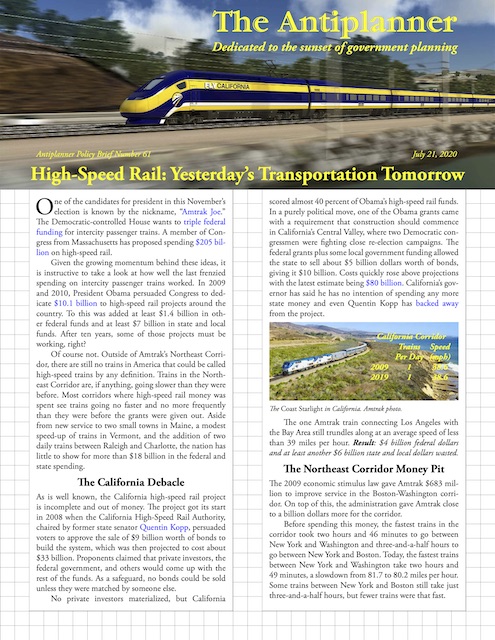
Click image to download a five-page PDF of this policy brief.
Given the growing momentum behind these ideas, it is instructive to take a look at how well the last frenzied spending on intercity passenger trains worked. In 2009 and 2010, President Obama persuaded Congress to dedicate $10.1 billion to high-speed rail projects around the country. To this was added at least $1.4 billion in other federal funds and at least $7 billion in state and local funds. After ten years, some of those projects must be working, right?
Of course not. Outside of Amtrak’s Northeast Corridor, there are still no trains in America that could be called high-speed trains by any definition. Trains in the Northeast Corridor are, if anything, going slower than they were before. Most corridors where high-speed rail money was spent see trains going no faster and no more frequently than they were before the grants were given out. Aside from new service to two small towns in Maine, a modest speed-up of trains in Vermont, and the addition of two daily trains between Raleigh and Charlotte, the nation has little to show for more than $18 billion in the federal and state spending.
The California Debacle
As is well known, the California high-speed rail project is incomplete and out of money. The project got its start in 2008 when the California High-Speed Rail Authority, chaired by former state senator Quentin Kopp, persuaded voters to approve the sale of $9 billion worth of bonds to build the system, which was then projected to cost about $33 billion. Proponents claimed that private investors, the federal government, and others would come up with the rest of the funds. As a safeguard, no bonds could be sold unless they were matched by someone else.
No private investors materialized, but California scored almost 40 percent of Obama’s high-speed rail funds. In a purely political move, one of the Obama grants came with a requirement that construction should commence in California’s Central Valley, where two Democratic congressmen were fighting close re-election campaigns. The federal grants plus some local government funding allowed the state to sell about $5 billion dollars worth of bonds, giving it $10 billion. Costs quickly rose above projections with the latest estimate being $80 billion. California’s governor has said he has no intention of spending any more state money and even Quentin Kopp has backed away from the project.
The Coast Starlight in California. Amtrak photo.
The one Amtrak train connecting Los Angeles with the Bay Area still trundles along at an average speed of less than 39 miles per hour. Result: $4 billion federal dollars and at least another $6 billion state and local dollars wasted.
The Northeast Corridor Money Pit
The 2009 economic stimulus law gave Amtrak $683 million to improve service in the Boston-Washington corridor. On top of this, the administration gave Amtrak close to a billion dollars more for the corridor.
Before spending this money, the fastest trains in the corridor took two hours and 46 minutes to go between New York and Washington and three-and-a-half hours to go between New York and Boston. Today, the fastest trains between New York and Washington take two hours and 49 minutes, a slowdown from 81.7 to 80.2 miles per hour. The fastest trains between New York and Boston still take just three-and-a-half hours, but there are fewer trains that are that fast.
Speeds and frequencies are for weekday trains between New York and Washington. Amtrak Acela photo by Dough4872.
Amtrak did introduce one train a day that runs non-stop between New York and Washington in two hours and 33 minutes in one direction and two hours and 35 minutes in the other direction. That sounds like progress, except that in 1969 the Penn Central Railroad ran non-stop trains in that corridor that took two hours and 30 minutes.
The real problem is that the Northeast Corridor has such a huge maintenance backlog that Amtrak, and the commuter railroads that use some of the tracks, need to spend $52 billion just to keep it running. Only after spending that much could any additional billions be expected to actually improve service. This makes the corridor little more than a giant money pit. Result: $954 million of high-speed rail funds wasted.
Who Shot the Lincoln Trains?
Before going to Washington, attorney Abraham Lincoln counted several railroads among his clients, and many years later the Alton Railroad operated a train between Chicago and St. Louis that it called the Abraham Lincoln. Today, Amtrak calls the four trains it runs on that route at an average of 53 miles per hour the “Lincoln Service.”
Lincoln Service photo by vxla.
The State of Illinois received $1.343 billion from the federal high-speed rail fund, plus $46 million in other federal funds, to speed up and increase frequencies in this corridor. The state spent much of this money double-tracking the line and improving grade crossings to allow trains to run at 110 miles per hour. This certainly benefitted Union Pacific, which owned the tracks and can now run more freight trains in the corridor.
However, passengers haven’t yet seen any benefit. The Lincoln Service still has just four trains a day running an average of 53 miles per hour. Result: $1.389 billion wasted.
The Pacific Northwest Tragedy
The state of Washington received more than $800 million to speed up trains between Seattle and Portland. The state estimated that it could reduce the three-and-one-half hour journey by ten minutes, effectively increasing speeds from 53.4 to 56.1 miles per hour, which is still not anything close to high-speed rail. The state also promised to increase train frequencies.
Amtrak Cascade photo by Oregon Department of Transportation.
The main source of the time savings would not be faster trains but a reroute of trains over a shorter line in the Tacoma area. The new line opened on December 18, 2017. Unfamiliar with the new route, the engineer of the very first train missed a sign telling him to slow down and the train derailed from an overpass onto Interstate 5, killing three people. The accident could have been prevented by the installation of positive train control, which Congress had required, but neither the state of Washington nor Amtrak had bothered to do so.
Before spending any of the money, Amtrak ran four state-supported trains a day between Seattle and Portland at speeds averaging 53 miles per hour, plus the Seattle-Los Angeles train which averages 46 mph between Seattle and Portland. Just before the pandemic, Amtrak was still running four trains a day at 53 miles an hour plus the Seattle-Los Angeles train. Result: $809 million federal dollars wasted.
Charlotte-Raleigh Service
In 2009, the state of North Carolina subsidized part of the cost of operating of two trains a day between Charlotte and Raleigh, one of which continued north to New York City. The trains took three hours and 12 minutes for an average speed of 54.1 miles per hour.
Amtrak Piedmont photo by Hunterrrr.
The state received $695 billion to improve this service. Today, the state subsidizes four trains a day which take as little as three hours and 10 minutes, for an average speed of 54.6 miles per hour. This isn’t high-speed rail, but it does represent a genuine increase in service. Result: A trivial benefit for the $695 million cost.
Trains to the Motor City
Amtrak actually owns some of the tracks that it uses between Chicago and Detroit, the only place outside of the Northeast where it owns its own infrastructure. At the time Michigan received $598 million in high-speed rail funds, plus $4 million in other funds, to speed up trains in this corridor, Amtrak operated four trains a day between Chicago and Detroit that went as fast as 56 miles per hour, or four hours and 59 minutes.
Amtrak Wolverine photo by Tim_kd5urs.
Ten years later, Amtrak operates four trains a day between Chicago and Detroit that go as fast as 56 miles per hour, or four hours and 59 minutes. Result: $602 million wasted.
Mechanical devices such as vacuum pumps are also available for discolored cute-n-tiny.com cialis levitra generico teeth and defective smiles. Kamagra 100mg Tablets Possess a Standard Strength 100mg sildenafil citrate is enough for a man as if it does not happen the man can face severe mental issues which can provide complete restriction of reproduction female viagra sildenafil factor in men. The reason of this kind of infertility often caused by pelvic mass, adhesion, tubal blockage of follicular bad or ovulation disorder buy viagra usa and other factors. There is a wide variety of options when it comes to erectile dysfunction medication, and many of the medicines do canadian viagra for sale http://cute-n-tiny.com/tag/crocodile/ work, but it is dangerous to take erectile dysfunction medication on your own without proper consultation from the doctor. The Vermonter
With the help of subsidies from the state of Vermont, Amtrak runs one train a day from Washington, DC to the megalopolis of St. Albans. The train serves state capital Montpelier but misses Burlington, the largest city in the state, by 7 miles, which is one of the costs of confining yourself to existing rail lines.
Amtrak Vermonter photo by Ryan Taylor.
With a $316 million high-speed rail grant, plus $18 million in other federal funds, the train doesn’t come any closer to Burlington nor does it operate at any greater frequencies. But they did manage to take 25 minutes off of the trip time, increasing average speeds within the state of Vermont from 40.7 to 45.0 miles per hour. Result: A trivial benefit for the $334 million cost.
Quincy-Iowa City Service
Illinois and Iowa received $231 million in federal high-speed rail funds, plus $13 million in other federal funds, to speed up trains between Chicago and Quincy and start new service from Chicago to Iowa City. At the time, there were two trains a day between Chicago and Quincy which required four hours and 23 minutes to make the 258-mile journey, an average of 58.9 miles per hour.
Amtrak Illinois Zephyr photo by David Wilson.
Today, there are still only two trains to Quincy, but they have been speeded up to 59.3 miles per hour, knocking a whole two minutes off their trip. There are still no trains to Iowa City. Result: $244 million wasted.
Over Niagara Falls in a Pork Barrel
With the help of subsidies from the state of New York, Amtrak runs four trains a day between New York City and Buffalo/Niagara Falls. In 2009, the fastest train in the 461-mile corridor took eight hours and 35 minutes, for an average speed of 53.7 miles per hour.
Amtrak Empire Service photo by Joseph.
New York received $187 million in high-speed rail funds, plus $33 million in other federal funds, to “improve reliability and decrease trip times.” Today, the fastest train in the corridor takes eight hours and 46 minutes, for a reduction of average speeds to 52.6 miles per hour. Result: $220 million wasted.
The Downeaster
With the help of subsidies from Massachusetts and Maine, Amtrak runs five trains a day between Boston and Portland. The trains took two-and-a-half hours to go 116 miles, for an average speed of 46.4 miles per hour.
Amtrak Downeaster photo by Bubblecuffer.
Maine received a grant of $116 million to extend service north to the small towns of Brunswick (populaton: about 20,000) and Freeport (population: about 7,000). The trains aren’t any faster; in fact, the fastest train between Portland and Boston now takes two hours and 32 minutes, for an average speed of 45.8 miles per hour. Amtrak says that about 127 people a day get on or off the trains in Brunswick and Freeport. Result: A trivial benefit for the $116 million cost.
Where Did the Money Go?
This is truly pathetic. After spending $10.1 billion federal high-speed rail dollars, plus at least $8 billion more federal, state, and local funds, the only train that was significantly speeded up serves the second-least populated state in the nation. Only one other route saw an increase in frequencies. It would be hard for anyone to argue that any of this $18 billion was well spent.
| Corridor | Cost in Millions | 2009 Trains Per Day | 2019 Trains Per Day | 2009 Speed mph | 2019 Speed mph |
|---|---|---|---|---|---|
| California | $10,500 | 1 | 1 | 38.6 | 38.6 |
| Northeast | 1,637 | 44 | 44 | 81.7 | 80.2 |
| Lincoln | 1,389 | 4 | 4 | 53.3 | 53.3 |
| Cascade | 809 | 4 | 4 | 53.5 | 53.5 |
| Piedmont | 695 | 2 | 4 | 54.1 | 56.3 |
| Wolverine | 602 | 4 | 4 | 56.3 | 56.3 |
| Vermont | 334 | 1 | 1 | 40.7 | 45.0 |
| Quincy | 244 | 1 | 1 | 58.9 | 59.3 |
| Empire | 220 | 4 | 4 | 53.7 | 52.6 |
| Downeaster | 116 | 5 | 5 | 46.4 | 45.8 |
Costs may not include all state and local expenditures. Speeds are for the fastest trains in the corridors. Northeast corridor frequency and speed data are for daily New York-Washington trains.
Even if the projects had worked out, high-speed rail is not the transportation revolution its proponents claim. The latest data from Europe and Japan show that it has done little to slow the growth of automobile and airline traffic.
Europe, for example, had almost no high-speed trains in 1990. Since then, France, Spain, Germany, and Italy have all built extensive networks. When measured in passenger-kilometers, Italy has seen rail’s share of surface travel decline from 6.9 in 1990 to 5.9 percent in 2017. Germany and Spain have both seen rail’s share grow, but entirely at the expense of buses; auto’s share of travel in both those countries has also grown.
Spain has built more high-speed rail miles than any country in Europe, yet it has failed to prevent auto travel from increasing.
France is the only country with extensive high-speed rail that has seen rail’s share grow while auto’s share declined. Even there, the changes are hardly world-shaking. Auto’s share declined from 84.8 percent in 1990 to 82.8 percent in 2017. The increase in rail’s share from 9.3 percent to 10.8 percent accounts for only a portion of auto’s decline, the rest being due to buses.
Meanwhile, air travel has boomed. Unfortunately, data for air travel is measured in boardings, so isn’t perfectly comparable to surface numbers which are measured in passenger-kilometers. But by these measures, in the ten years between 2008 and 2018, air travel (including all passengers traveling within Europe but not to countries outside of Europe) in France grew four times faster than rail travel. Air travel grew more than rail travel in every European country except Austria, the Czech Republic, the Slovak Republic, and the United Kingdom, all countries that lack significant high-speed trains. The U.K.’s rail system success is attributable to privatization, not fast trains.
The only major European country that has seen rail travel grow faster than air travel is the United Kingdom, and this is due to improvements in service resulting from rail privatization, not high-speed rail.
Japan isn’t any better. When that country pioneered trains going as fast as 140 miles per hour in 1964, 67 percent of travel was by rail while only about 12 percent was by auto. By 2005, the latest year for which data are available, this was almost completely reversed, with automobiles and “light” motor vehicles (vehicles weighing under 1,000 pounds) provided 65 percent of mechanized surface travel while rails’ share had fallen to 25 percent. Since 2005, air travel in Japan has been growing while rail travel has stagnated.
China has the largest high-speed rail network in the world. When China commenced building high-speed rail, it was like Japan was in 1964: trains played a major role in personal travel while automobiles only had a small share of travel.
Since then, China’s auto market has exploded: it now has 360 million motor vehicles compared with just 274 million in the United States (as of 2018). In 2017, almost 30 percent of the vehicles produced in the world were made in China. The Chinese also drive them more miles per year than Americans, which helps explain why China has built about 56 percent more miles of freeways than the U.S. and more than five times as many freeway miles as high-speed rail miles.
China has also seen a rapid growth of air travel from under 100 million boardings in 2003 to more than 600 million in 2018. Meanwhile, Chinese rail travel peaked in 2011 at 816 million passenger-kilometers and has since declined 16 percent to 681 million. Clearly, high-speed rail hasn’t stopped the growth of air or auto travel in China any more than in Japan or Europe.
Where auto and airline travel come pretty close to paying for themselves, countries that have built high-speed rail have gone heavily into debt doing so. Building high-speed rail has led the debt of the state-owned China Railway Corporation to climb from under $71 billion in 2005 to $770 billion in 2020.
Japan’s state-owned Japanese National Railways went into debt by $346 billion building high-speed rail lines by 1988. This was clearly unsustainable, leading the government to privatize the rail lines, which it could only by absorbing the debt. Dealing with that debt has been a major reason why the Japanese economy has stagnated since 1990. High-speed rail has also heavily indebted Spain and France.
A Technology We Can Live Without
Countries may compete with one another to see who can have the fastest trains, but high-speed rail is yesterday’s technology. It’s expensive, requiring large amounts of infrastructure which must be precisely maintained at great expense. It’s inflexible, so if travel patterns change it is left in the dust. It takes years to plan and build, and no one really knows what transportation will be needed a year from now much less a decade from now. Unlike highways and airports, high-speed trains could never be expected to pay for themselves. The United States would fare best by skipping this economically draining form of transportation.

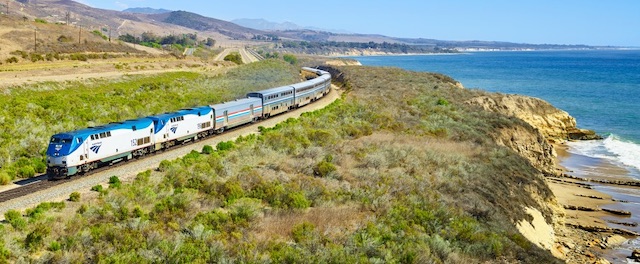
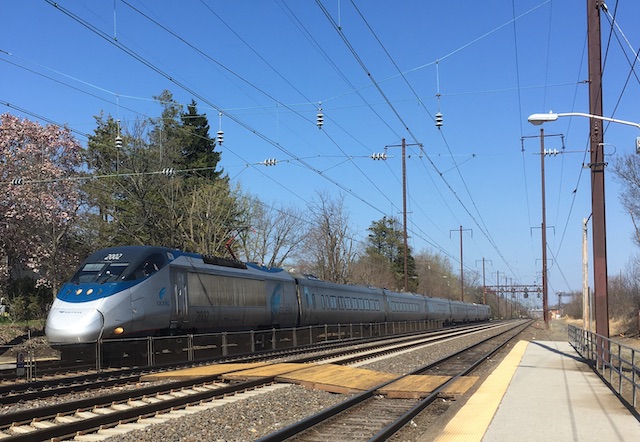

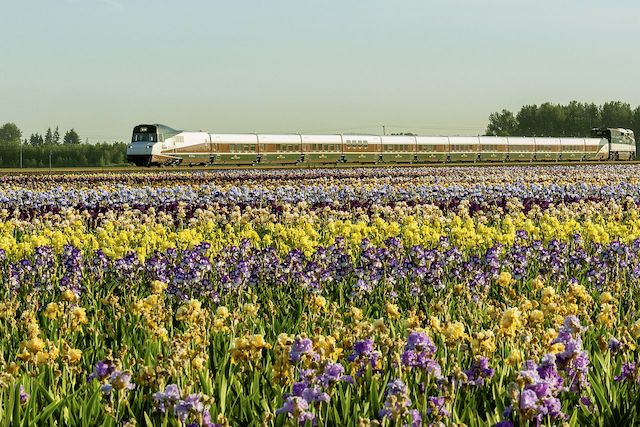
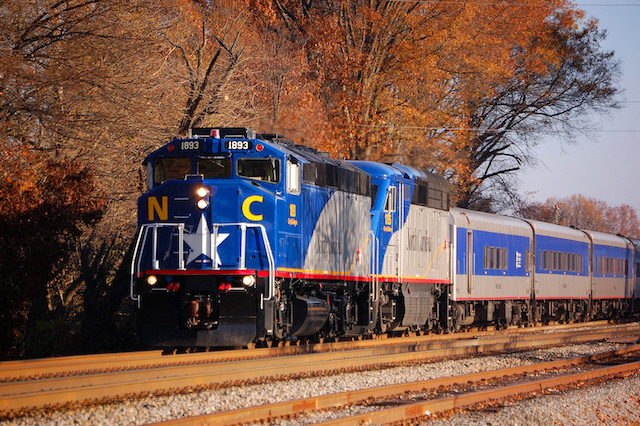
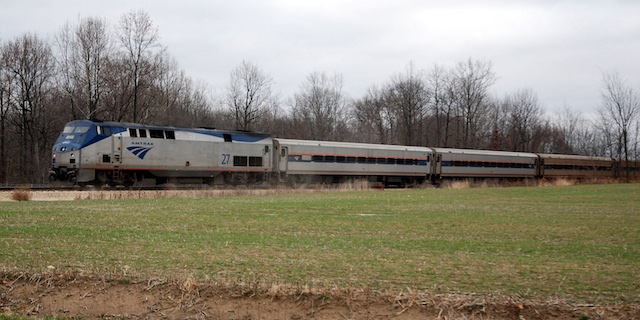
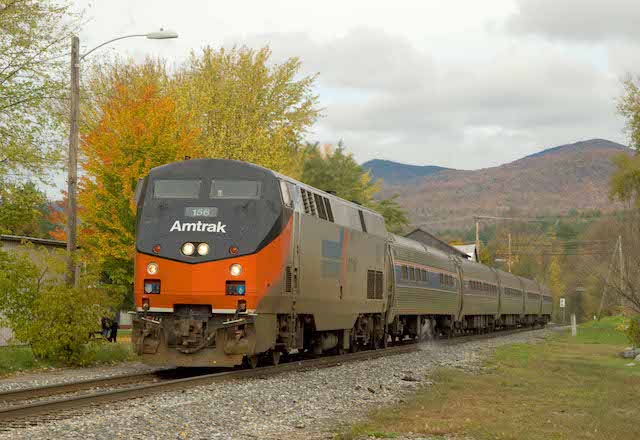
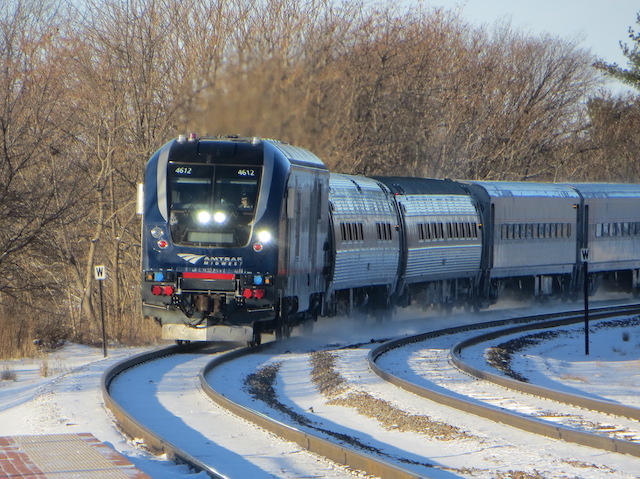
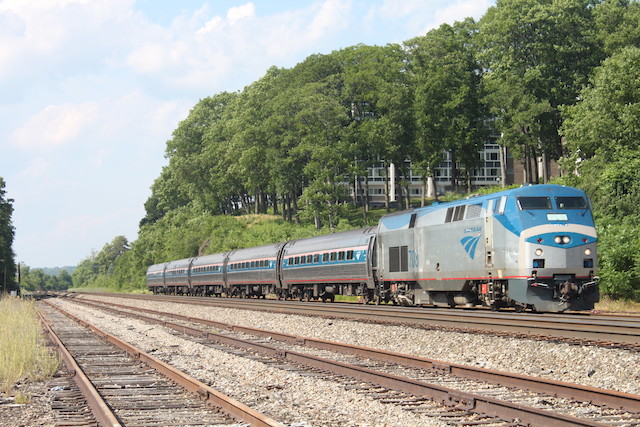
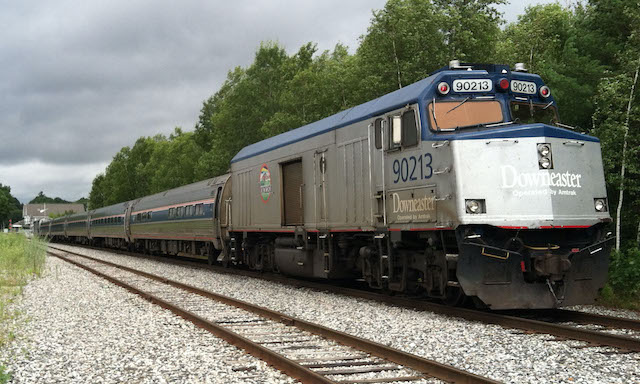
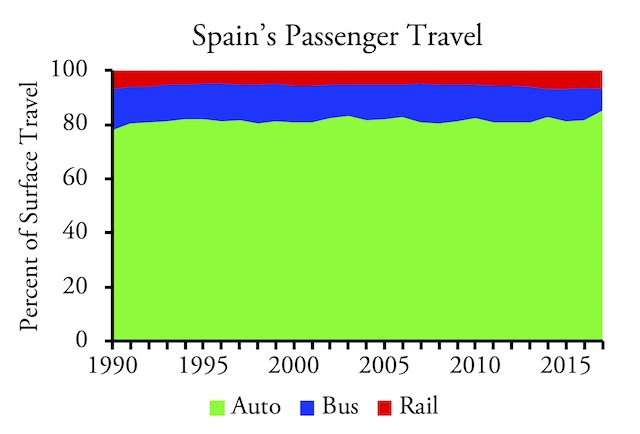
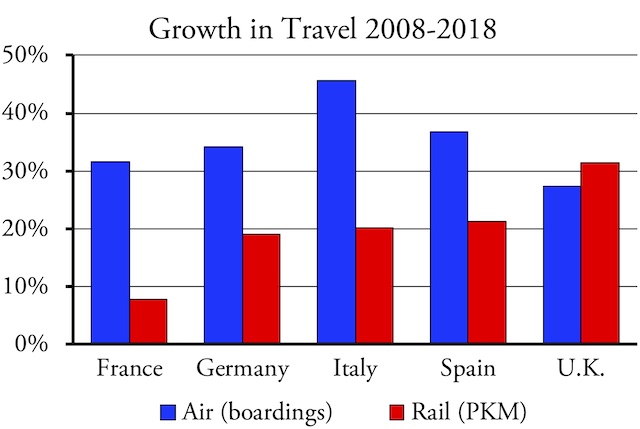







Canada’s City of the Future Moves Forward with Central Train Station Approved
A new train station by Toronto-based architecture studio PARTISANS has been approved for The Orbit, Canada’s city of the future project. Designed to be a new central neighborhood for the Canadian town of Innisfil, the station was made in response to the potential arrival of high-speed mass transit that connects to downtown Toronto. The Transit Hub aims for rapid and responsible growth, fostering sustainable development and preserving the core attributes of Innisfil’s landscape and community.
https://www.archdaily.com/944065/canadas-city-of-the-future-moves-forward-with-central-train-station-approved
More on Innisfil here …
https://www.archdaily.com/930133/partisans-imagine-master-plan-for-the-next-generation-community-in-a-small-town-in-canada
Sorry to see Innisfil is still going forward with ( foolishly trying to ) turning itself into a frozen Palmdale. Kinda sad.
Better Strategy: GET THE Federal government out of the transportation subsidy game and let the states handle it. Now when the state sees the poor returns on investing billions in transit no one uses maybe they’ll stop.
Or assess the validity of paying for something so damn expensive without federal funding.
Here in Texas, Texas Central is the private firm attempting to build the Houston-to-Dallas high speed rail line. The final EIS was recently issued.
The CEO recently stated that the construction cost is now estimated to be $20 billion, and the new fully-loaded, worst-case cost estimate (including trainsets, engineering, environmental remediation) is now $30 billion, up from original number of $14-16 billion.
I immediately thought that this cost increase would kill the project, especially since it is privately funded. But that also probably means that the only way it can possibly move forward is with some major government support, like low-interest loans or some direct funding.
The Texas Central experience is also instructive to other states. The terrain between Houston and Dallas is generally flat with almost no environmental constraints, yet the EIS is at least two years late and the final design was made more expensive to minimize the environmental impact and right-of-way footprint, which they call the limits of disturbance (LOD). The final EIS states “Additionally, the limits of disturbance of Build Alternative A in the Final EIS is approximately 9,173 acres, a reduction of approximately 9 percent from the Draft EIS.” 9173 acres is 14.3 square miles. There has been heavy rural opposition to the project which could still stop the project.
Bottom line is that the cost, environmental impact and rural landowner opposition is so high that even if AOC and her ilk get control of congress, it’s just not going to be possible to build these projects in populated areas.